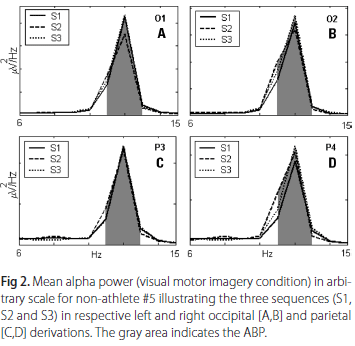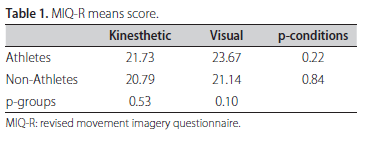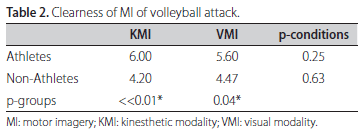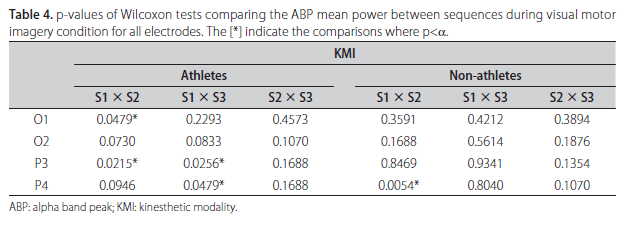The evoked cerebral electric response when sequences of complex motor imagery (MI) task are executed several times is still unclear. This work aims at investigating the existence of habituation in the cortical response, more specifically in the alpha band peak of parietal and occipital areas (10-20 international system electroencephalogram, EEG, protocol). The EEG signals were acquired during sequences of MI of volleyball spike movement in kinesthetic and visual modalities and also at control condition. Thirty right-handed male subjects (18 to 40 years) were assigned to either an 'athlete' or a 'non-athlete' group, both containing 15 volunteers. Paired Wilcoxon tests (with α=0.05) indicates that sequential MI of complex tasks promotes cortical changes, mainly in the power vicinity of the alpha peak. This finding is more pronounced along the initial trials and also for the athletes during the modality of kinesthetic motor imagery.
motor imagery; alpha band; volleyball








